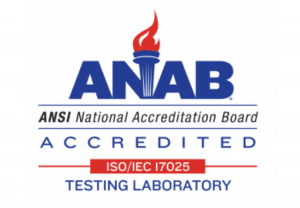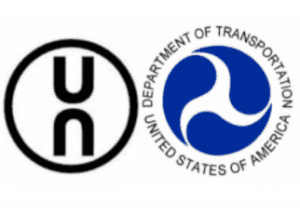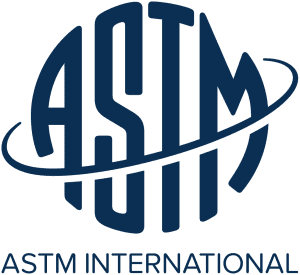Testing Standard:
ISTA 6-FEDEX-B FedEx Procedures for Testing Packaged Products Weighing Over 150 lbs
Standard Number
ISTA 6-FEDEX-B
Standard Title
Testing Packaged Products Weighing Over 150 lbs
Overview for ISTA 6-FEDEX-B:
ISTA 6-FEDEX-B is a general simulation test for individual packaged products shipped through FedEx’s delivery system. This procedure uses a general simulation of actual transport hazards by either ground or air with several types of packages. This method also includes hazards for international shipments. Purple Diamond Testing offers this testing as part of our packaging distribution testing services.
Rationale for ISTA 6-FEDEX-B:
Testing Packaged Products Weighing Over 150 lbs. Can be used to evaluate the protective performance of a packaged product related to shocks, compression, vibrations, and other stressors normally met in a FedEx® delivery system. The procedure is used to create general simulation hazards in a laboratory environment that is 100% repeatable. ISTA 6-FEDEX-B must also process claims if there is damage in the field using FedEx’s distribution system.
The International Safe Transit Association (ISTA) Standard 6-FEDEX-B is a testing protocol developed by FedEx for packaging heavier items that weigh over 150 pounds. This protocol outlines the procedures for testing such packaged products to ensure they can withstand the rigors of transportation and handling.
The testing procedure for ISTA 6-FEDEX-B involves subjecting the packaged product to various simulated transportation and handling hazards, including vibration, shock, and compression. The packaging must be able to withstand these hazards without any damage to the product inside.
The test is carried out in four stages:
1. Conditioning: The packaged product is conditioned to a specific temperature and humidity for a fixed period before the test. This is to ensure that the package is tested in conditions that are representative of real-world transportation and storage scenarios.
2. Random Vibration: The packaged product is subjected to random vibrations in three mutually perpendicular axes for a fixed duration. The severity and frequency of the vibrations are based on the weight and size of the packaged product.
3. Shock: The packaged product is subjected to a series of shocks, ranging from low to high intensity, in different orientations. The severity of the shock is based on the weight of the packaged product.
4. Compression: The packaged product is subjected to a static load for a fixed duration. The load is applied uniformly to the package and is designed to simulate the weight of other packages being stacked on top of it during transportation.
If the packaged product can withstand all these hazards without any damage, it is considered to have passed the test. This protocol ensures that packages containing heavier items are adequately tested and can withstand the stresses and strains of transportation and handling.
The following parties benefit from ISTA 6-FEDEX-B FedEx Procedures for Testing Packaged Products Weighing Over 150 lbs:
1. Manufacturers: The ISTA 6-FEDEX-B FedEx procedures provide a standardized testing method for manufacturers to ensure their products are protected during transportation.
2. Shippers: Shippers benefit from the ISTA 6-FEDEX-B FedEx procedures as they reduce the risk of damage to the packaged products during transportation, which can result in claims and additional costs.
3. Customers: Customers benefit from the ISTA 6-FEDEX-B FedEx procedures as they receive their products in good condition, reducing the need for returns or replacements.
4. Carriers: Carriers benefit from the ISTA 6-FEDEX-B FedEx procedures as they reduce the risk of damage claims, making shipping more cost-effective.
5. Regulatory authorities: Regulatory authorities benefit from the ISTA 6-FEDEX-B FedEx procedures as they ensure that products comply with transportation regulations, leading to increased safety and reduced risk for the environment and public health.
The ISTA 6-FEDEX-B FedEx procedures for testing packaged products weighing over 150 lbs are important for several reasons:
1. Safety: Products weighing over 150 lbs are heavy and often unwieldy, which makes them potentially dangerous during transport. Ensuring that these products are packaged correctly and can withstand the rigors of transport helps to prevent accidents and injuries.
2. Product integrity: Products that are not packaged correctly can be damaged during transit, which can result in costly returns, repairs, or replacements. By following the procedures, manufacturers can ensure that their products arrive at their destination in the same condition they were in when they left the factory.
3. Customer satisfaction: Customers expect their products to arrive on time and in good condition. By testing packaging to the ISTA 6-FEDEX-B standard, manufacturers can increase the likelihood that their products will arrive safely and intact, which will improve customer satisfaction and reduce returns.
4. Compliance: Many regulatory agencies require that products be tested to certain standards before they can be shipped. By following the procedures, manufacturers can ensure that their products are in compliance with these regulations.
Overall, the procedures provide a standardized set of guidelines for testing packaged products weighing over 150 lbs. By following these procedures, manufacturers can promote safety, product integrity, customer satisfaction, and compliance.
Key Points:
- Evaluates the performance of common types of packages
- Provides a guide to evaluate packaging systems in the laboratory environment
- Consider this method for packaged-product up to 150 Lbs
- Consider ISTA 3E to if you need to test unitized loads outside of the ISTA 6-FEDEX-B scope
Related Standards:
- ASTM D642 – Test Method for Determining Compressive Resistance of Shipping Containers, Components, and Unit Loads
- ASTM D4332 – Practice for Conditioning Containers, Packages, or Packaging Components for Testing
- ASTM D4728 – Test Method for Random Vibration Testing of Shipping Containers
- ASTM D5265 – Test Method for Bridge Impact Testing
- ASTM D5276 – Test Method for Drop Test of Loaded Containers by Free Fall
At Purple Diamond, we offer a free consultation or a guided tour of our facilities. Consultations can be done over the phone or on zoom, so choose what suits you best. To get in touch, go to our Contact Us page and fill out the form or book an appointment using the calendar below. Our goal is to assist you in any way possible, so please don’t hesitate to contact us. Thank you so much for reading down this far and thank you for considering Purple Diamond as your dedicated testing, engineering, and design facility for all of your packaging needs.
Related Testing Standards
- ASTM D642
- ASTM D685
- ASTM D880
- ASTM D951
- ASTM D999
- ASTM D3078
- ASTM D3103
- ASTM D3285
- ASTM D4169
- ASTM D4332
- ASTM D4728
- ASTM D5265
- ASTM D5276
- ASTM D5277
- ASTM D5487
- ASTM D6055
- ASTM D6179
- ASTM D6344
- ASTM D6653
- ASTM D7386
- ASTM F88
- ASTM F1140
- ASTM F1886
- ASTM F1929
- ASTM F1980
- ASTM F2096
- ASTM F2250
- ASTM F3039
- ASTM D1596







